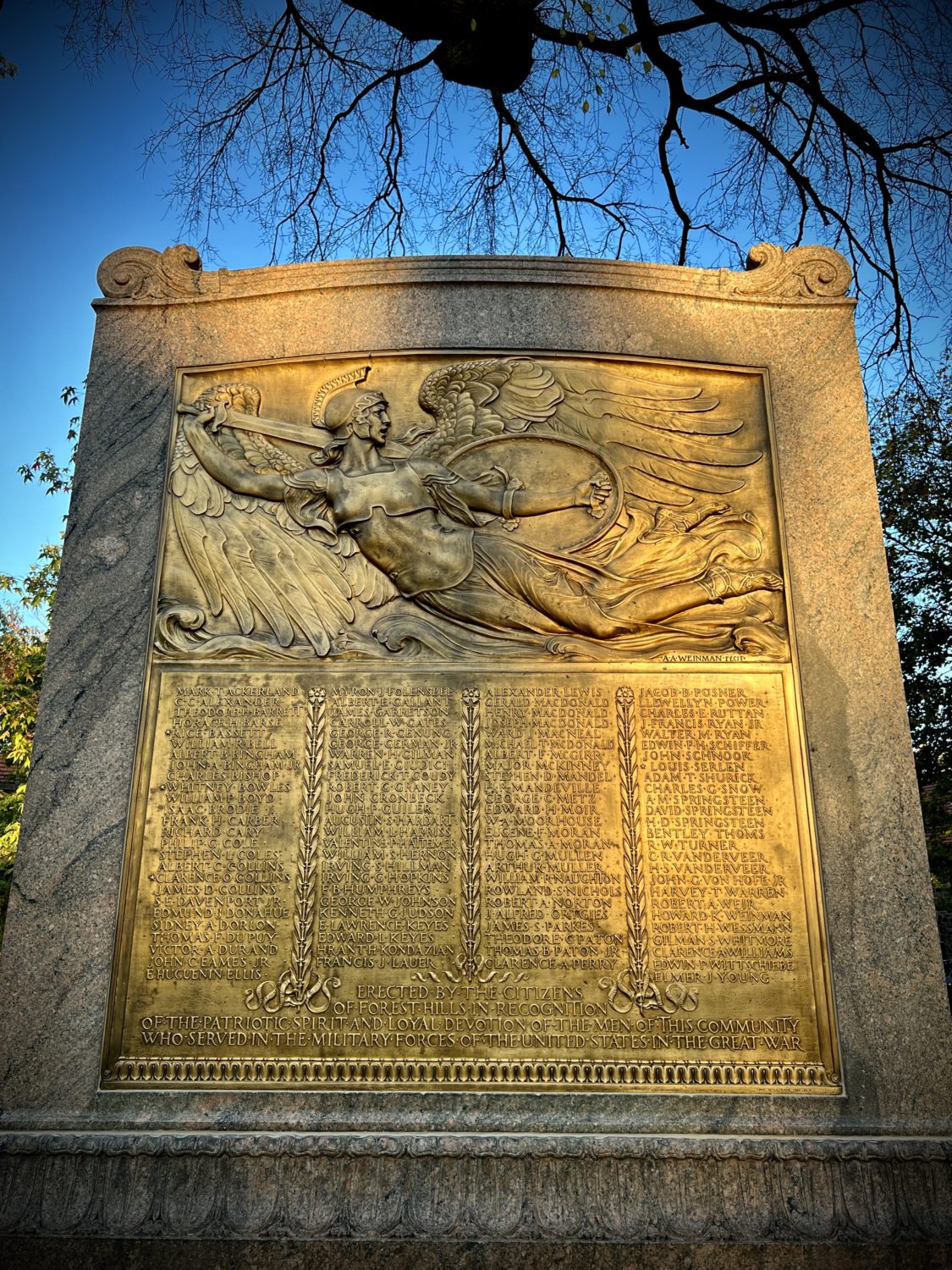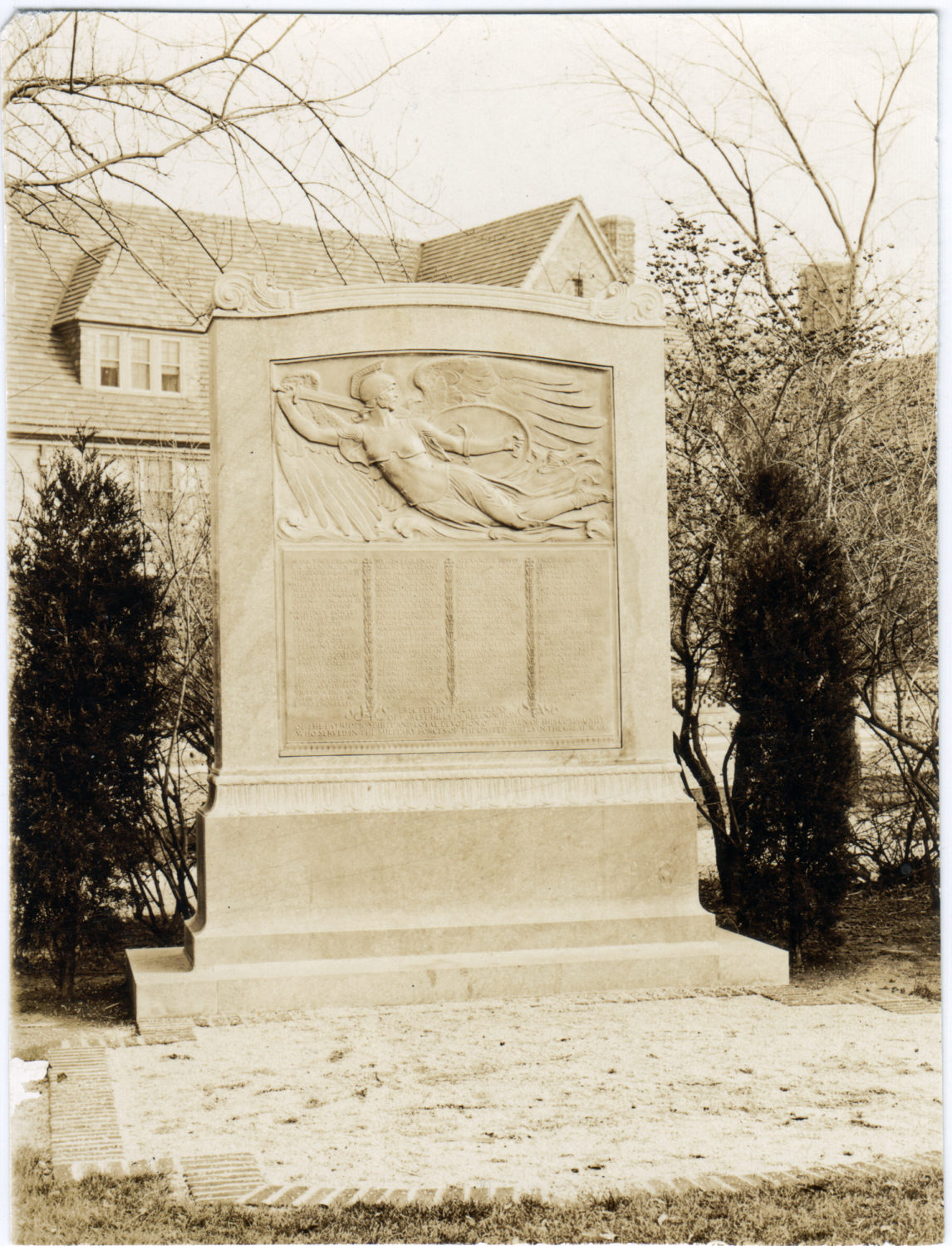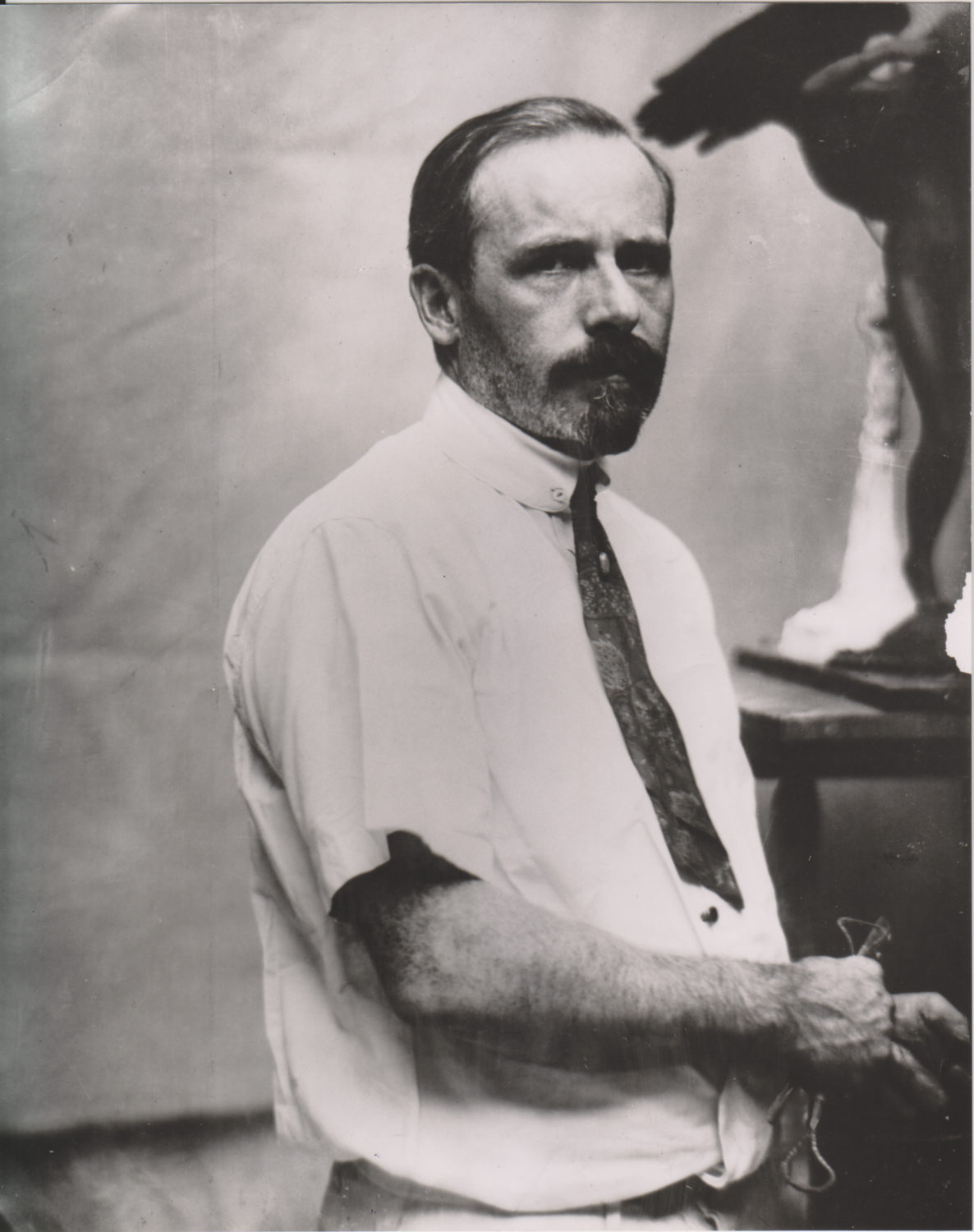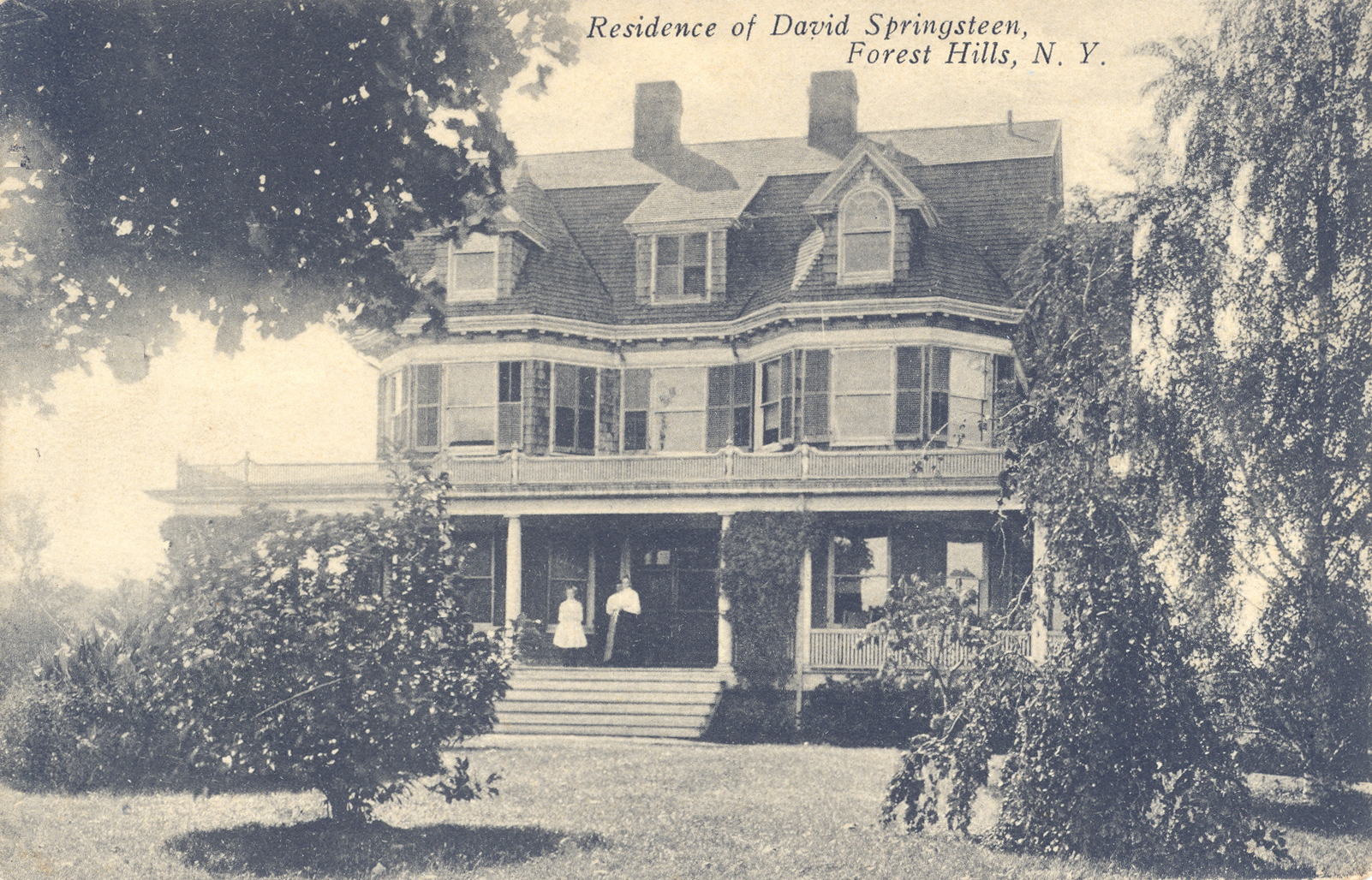WWI Soldiers & Sailors Memorial stands tall
By Michael Perlman
mperlman@queensledger.com

It is always timely to honor military veterans of the U.S. Armed Forces, and one day to maximize that honor for America’s bravest is Veterans Day on Nov. 11.
Forest Hills was named in 1906 and Forest Hills Gardens was founded in 1909. Architecturally and culturally significant buildings, landscapes and monuments add a mark of distinction, and some sites are associated with veterans, including the Captain Gerald MacDonald Statue in MacDonald Park and the landmarked Remsen Cemetery with doughboy sculptures.
Public art is a gift to the masses that bonds the generations, and a most historic and diverse monument is the WWI Soldiers & Sailors Memorial in Forest Hills Gardens.
It is situated on Flagpole Green, formerly known as Village Green. Dedicated in 1920, this ornate Neo-Classical pink granite and bronze monument commemorates 102 Forest Hills residents.

The monument reads: “Erected by the citizens of Forest Hills in recognition of the patriotic spirit and loyal devotion of the men of this community who served in the military forces of The United States in The Great War.”
The monument was designed by the renowned American sculptor, Adolph Alexander Weinman (1870 – 1952), who resided nearby at 236 Greenway South and operated a studio at 234 Greenway South.

The design symbolizes “The Call to Service” above the 102 names on the tablet.
Since last summer, residents observed meticulous restoration work, resulting in the polishing of the bronze tablet, which was green as far as most residents can recall.
Now it is particularly timely to memorialize and rejoice in the spirit of some of the most well-known and long-forgotten names, which opens a window into countless achievements. Artistry runs in the Weinman family. His son, Howard Kenneth Weinman (1901 – 1976), a WWI veteran, is featured on the monument.
One of his notable achievements is the Long Island Tercentenary Silver Half Dollar, which commemorates the 300th anniversary of the Dutch settlement of Long Island, and was issued in 1936.
Distinctive characteristics are heads of a Dutch settler and an Algonquin Native American, where the heads are alongside one another to represent the harmony among a peaceful settlement.
The reverse features a 17th century Dutch ship in full sail. His father is credited with the Walking Liberty Half Dollar and Winged Liberty Dime.
In some instances, families are featured, as in the case of Dr. Joseph MacDonald, Henry MacDonald, and Captain Gerald MacDonald (1882 – 1929), synonymous with MacDonald Park, named on April 25, 1933.

The park’s bronze sculpture bears homage to G. MacDonald, an officer of engineers at the Battle of Meuse-Argonne, who also erected bridges and dug trenches.
The sculpture was dedicated on May 27, 1934 by Mayor Fiorello H. La Guardia, after American Legion Post 630 allocated $1,500 at the request of veteran Henry MacDonald, Gerald’s brother.
The granite base inscription reads: “Capt. Gerald MacDonald; Memorial Dedicated By Forest Hills Post No. 630 The American Legion; To Those Who Served In The World War; 1934.”
The statue was sculpted by Henry MacDonald’s brother-in-law, Frederic de Henwood, and designed by architect William Henry Deacy.
A.M., David and Howard Springsteen represent one of the first families of Queens.

This family consisted of influential Dutch farmers who owned farmland encompassing what would currently be the southside of Queens Boulevard between Ascan Avenue and 77th Avenue.
Their property recalls the days of Forest Hills as Whitepot, prior to 1906.
Farmer David Springsteen (1849 – 1911) was also a director of Cord Meyer Development Company and represented the ninth Springsteen generation to settle locally.
His six children, included David, who is inscribed on the monument.
Through the 1940s, the porch-fronted Springsteen homestead, which was erected in 1898, stood at 112 Queens Boulevard and was later renumbered 108-36 Queens Boulevard.
Born in Truxton, N.Y., Cornell graduate and Forest Hills Gardens resident Clarence A. Perry (1872 – 1944) served as a major overseas during WWI and coordinated the post exchange system in training camps.

In 1924, he became a lieutenant colonel in the Reserve. He was an employee of the Division of Recreation of the Russell Sage Foundation from 1909 to 1937.
As an architect and planner, he originated the “Neighborhood Unit” theory in 1924, where he notably advocated for community development entailing educational, physical, social and recreational components.
Perry authored several books, including “Wider Use of the School Plant” (1910), “The Rebuilding of Blighted Areas” (1933), “Planning Improvement of Your Own Neighborhood” (1935) and “Housing for the Machine Age” (1939).
Part of his advocacy included promoting community pageants and plays exhibiting patriotic value, in place of risky Fourth of July fireworks.
WWI veteran Augustin S. Hardart (1889 – 1969) was the son of Frank Hardart, Sr., who with Joseph V. Horn, founded the Horn & Hardart Company, which launched the Automat, an icon of Americana.
Born in New Orleans, A. Hardart settled in New York in 1912 with his brother, Frank.
A. Hardart served as secretary of the company through 1946, followed by vice president.
The first Automat opened in 1902 in Philadelphia, and New Yorkers were proud to experience their first branch in Times Square in 1912.
In New York and Philadelphia, an estimated 800,000 patrons once frequented 180 self-service cafeterias daily, shaping 20th century dining and culture prior to the rise of the fast food industry. Forest Hills offered smaller Horn & Hardart Retail Shops at 71-63 Austin Street and 116-63 Queens Boulevard.
Frank Hardart, Jr (1884 – 1972), the firm’s vice president, resided at 188 Ascan Avenue and 64 Dartmouth Street.
Patrons inserted nickels into a slot on a distinctive display of compartments, turned a knob, opened a glass door and enjoyed fresh sandwiches, entrées or pies in an Art Nouveau or Art Deco ambiance with a signature massive picture window. Fresh drip-brewed coffee emerged from the mouth of a crafted lion or dolphin.
In 1991, the last Automat in New York shuttered, marking the end of a tradition.
The monument takes the viewer into the life of Kenneth G. Judson (1895 – 1970), who resided at 61 Olive Place and whose family was among Forest Hills Gardens’ founders.
He served as Navy ensign during WWI and then joined Judson & Co, a cotton brokerage.
He was a 65-year Gardens resident, who served as the longtime Forest Hills Gardens Corporation president. Additionally, he was a member of the West Side Tennis Club and Sons of the Colonial Wars.
Also featured is WWI veteran Frederick Truesdale Goudy (1899 – 1962), the son of Frederic William Goudy (1865 – 1947), a prominent American typeface designer, who proved that printing is a fine art.
In 1943, the Goudy Collection was acquired by the Library of Congress and considered the most comprehensive of its kind.
More than 100 of his designs were displayed in a 1946 exhibition. The collection consisted of thousands of books, where most featured his typography and design.
Signature titles include “Why We Have Chosen Forest Hills Gardens For Our Home” and “The Alphabet and Elements of Lettering.”
At Village Press in a pre-Revolutionary farm mill that he named Deepdene in Marlboro, N.Y., it was a family operation, with his wife Bertha working at the case and setting up books, and Frederick T. Goudy operating machines, as his father cut the matrices.
The operation was previously located at the family residence on Deepdene Road in Forest Hills Gardens.
Deepdene is a crisp serif type that the elder Goudy designed.
Other highlighted typefaces include Goudy Old Style, Goudy Stout and Copperplate Gothic.
In his obituary, it said, “Mr. Goudy did more to rescue typography from standardized ugliness than any man since William Morris, whose spiritual descendant he was.”
The Goudys worked in the tradition of 16th century artisans.




